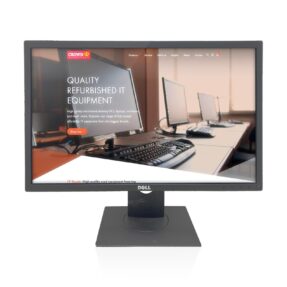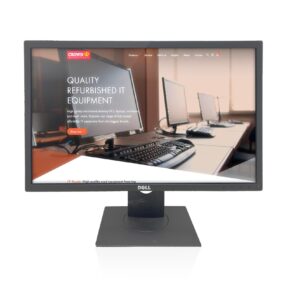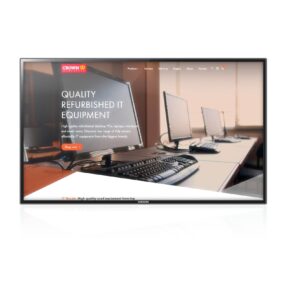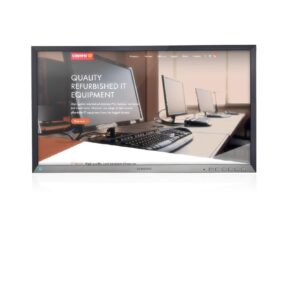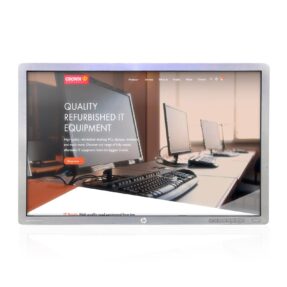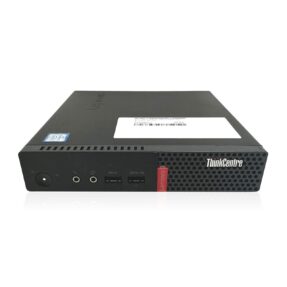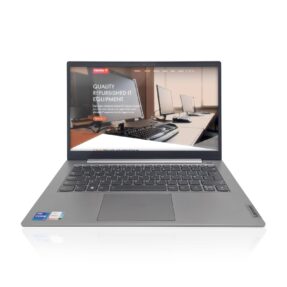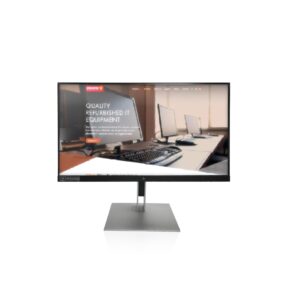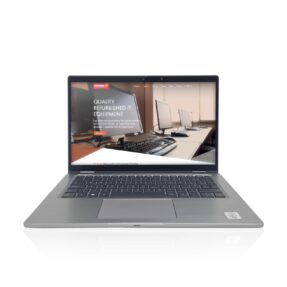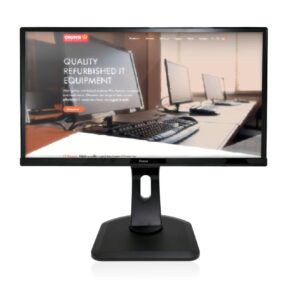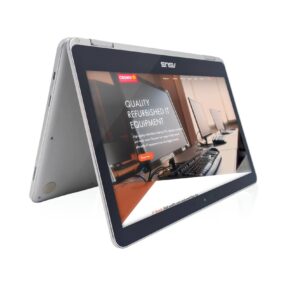-
In-stock (32)Dell£41.50 Excl. VAT£49.80 Incl. VAT
DELL P2217Hc 22″ LED-LCD IPS 16:9 FHD (1080p) Monitor w/ Stand – GRADE A, Refurbished
-
In-stock (9)Dell£41.50 Excl. VAT£49.80 Incl. VAT
DELL P2217H 22″ LED-LCD IPS 16:9 FHD (1080p) Monitor w/ Stand – GRADE A, Refurbished
-
In-stock (1)SAMSUNG£82.98 Excl. VAT£99.58 Incl. VAT
SAMSUNG MD46C 46″ LED FHD (1080p) TV – GRADE A, Refurbished
-
In-stock (1)SAMSUNG£74.68 Excl. VAT£89.62 Incl. VAT
SAMSUNG S27D850T 27″ PLS 2K WQHD (1440p) Monitor w/o Stand – GRADE A, Refurbished
-
In-stock (2)HP£37.33 Excl. VAT£44.80 Incl. VAT
HP EliteDisplay E241i 24″ IPS FHD (1080p) Monitor w/o Stand – GRADE B, Refurbished
-
In-stock (9)Lenovo£62.23 Excl. VAT£74.68 Incl. VAT
LENOVO ThinkCentre M710Q i3-6100T 12GB DDR4 128GB SSD Win10 Mini PC – GRADE A, Refurbished
-
In-stock (1)Lenovo£373.50 Excl. VAT£448.20 Incl. VAT
LENOVO THINKBOOK 14 G4 IAP 14″ i7-1255U 16GB DDR4 512GB Win11 Laptop – GRADE A, Refurbished
-
In-stock (1)APPLE£74.68 Excl. VAT£89.62 Incl. VAT
APPLE IMAC (A1418) i5-3330S 8GB DDR3 1TB HDD macOS High Sierra Desktop – GRADE B, Refurbished
-
In-stock (2)HP£99.59 Excl. VAT£119.51 Incl. VAT
HP E24 G4 24″ IPS 1920 x 1080 Monitor w/ Stand – GRADE A, Refurbished
-
In-stock (1)Dell£215.80 Excl. VAT£258.96 Incl. VAT
DELL LATITUDE 7310 13.3″ i7-10810U 16GB DDR4 256GB Win11 Laptop – GRADE B, Refurbished
-
In-stock (1)IIYAMA£49.79 Excl. VAT£59.75 Incl. VAT
IIYAMA XUB2390HS 23″ AH-IPS FHD 1080p Monitor w/o Stand – GRADE A, Refurbished
-
In-stock (1)ASUSTEK COMPUTER INC.£107.88 Excl. VAT£129.46 Incl. VAT
ASUSTEK C302C 12.5″ M7 8GB DDR3 32GB eMMC ChromeOS Laptop – GRADE A, Refurbished
This website uses cookies so that we can provide you with the best user experience possible. Cookie information is stored in your browser and performs functions such as recognising you when you return to our website and helping our team to understand which sections of the website you find most interesting and useful.
